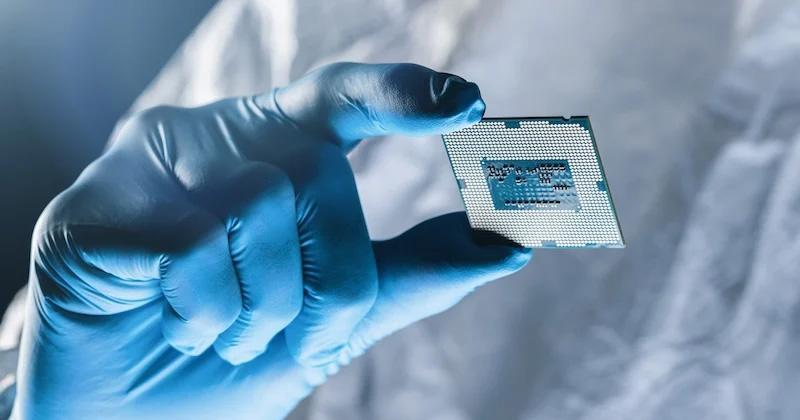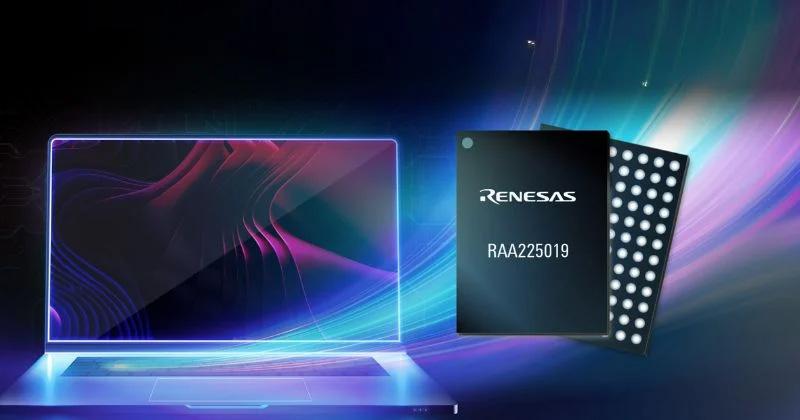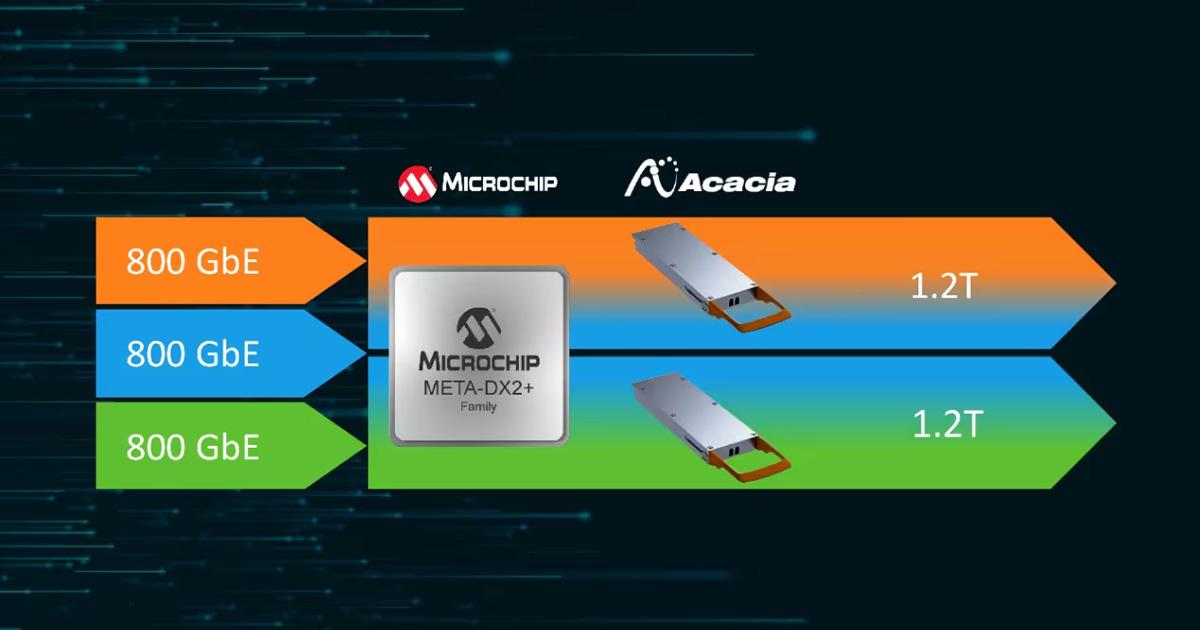
Microchip Tackles Specialized Computing With PCIe 4.0 Switches
This week, Microchip announced its PCI100x family of Switchtec PCIe Gen 4.0 switches, designed to address scalability, latency, and connectivity challenges in industrial and automotive applications. With continuous growth in data-intensive applications, traditional PCIe architectures are struggling with bandwidth limitations and inflexible designs.
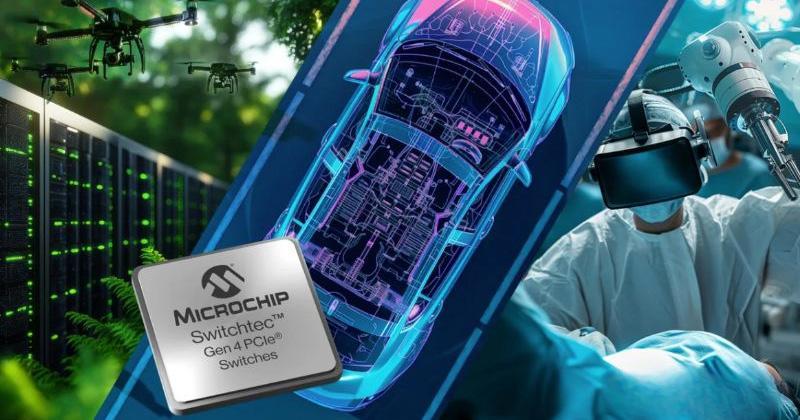
Microchip's new PCIe Gen 4.0 switch. Image used courtesy of Microchip
Microchip believes its advanced PCIe switches can solve these issues through more efficient resource sharing and multi-host connectivity.
PCIe Gen 4.0 Switches for Industrial and Automotive
With eyes on Level 2+ ADAS, industrial PCs, and video processing, the PCI100x series (product brief linked) aims to offer a unique combination of scalability, low latency, and high throughput.
Compliant with PCIe Base Specification 4.0, these switches feature up to 16 lanes and support 16 GT/s per lane, equating to a total switching capacity of 256 GB/s. With advanced non-transparent bridge (NTB) capabilities, the devices facilitate multi-host connectivity for complex applications requiring resource sharing across domains. Meanwhile, port bifurcation supports configurations from x2 to x4 lanes for enhanced design flexibility and diverse endpoint requirements.
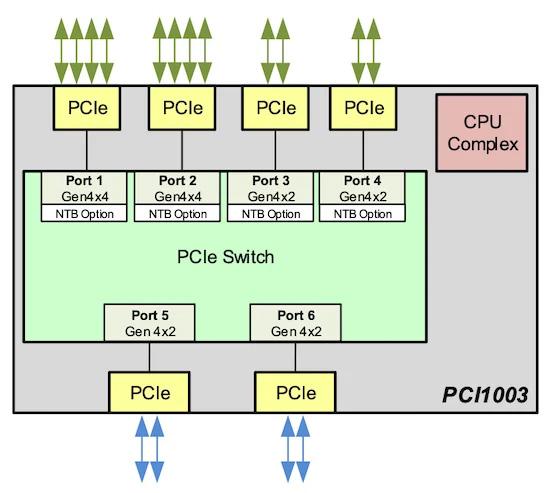
PCI1003 internal block diagram. Image used courtesy of Microchip
The architecture also integrates robust error management features such as automatic error reporting (AER), downstream port containment (DPC), and end-to-end data integrity protection. Power-saving modes include active state power management, clock gating in idle states, and support for L0, L1, L2, and L3 link states. Microchip's ChipLink tool suite enables diagnostics and debugging with capabilities such as real-time eye capture, stack error counters, and PCIe analyzer tools.
Family variants, such as the PCI1003, support up to six ports with NTB, allowing independent software domains and optimized packet routing. The family also offers commercial, industrial, and automotive-grade temperature ratings, secure firmware updates, and an OEM-controlled, root-of-trust bolster device security that aligns with ISO-26262 ASIL-B safety compliance.
Overcoming Direct-Connect Architectures
PCIe switches in modern systems address the inherent limitations of direct-connect PCIe configurations.
In direct-connect architectures, a single host connects to multiple endpoints, such as GPUs, storage devices, or network cards, without an intermediary switch. This design introduces scalability issues, bandwidth contention, and limited resource sharing since the host’s PCIe root complex must manage all transactions directly. This leads to a fixed number of lanes and ports that can restrict device connectivity.
PCIe switches mitigate these challenges by enabling multi-host connectivity, lane bifurcation, and efficient packet switching with minimal latency.
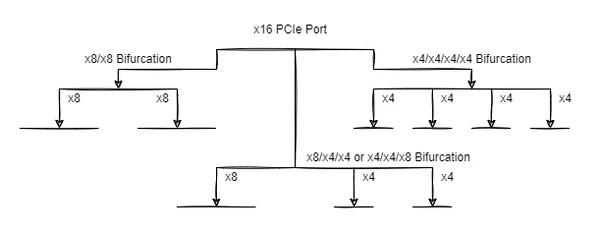
PCIe lane bifurcation. Image used courtesy of Sabrent
NTB enables multi-host connectivity through PCIe switches, which allows multiple root complexes (RCs) to coexist within a system. NTB facilitates resource sharing between isolated domains while maintaining data integrity and security.
Lane bifurcation in PCIe switches optimizes lane use by dividing a physical x16 connection into smaller logical segments (for example, x4 or x2). This feature efficiently allocates PCIe lanes to devices with varying bandwidth requirements to maximize throughput without wasting resources. Similarly, packet switching within PCIe switches eliminates bottlenecks by routing transactions between devices with minimal latency.
Broadening the Role of PCIe
As data-driven industries evolve, PCIe switches will be a fundamental part of the architecture of next-generation systems, with their unmatched ability to address scalability and resource efficiency. Microchip’s PCI100x switches are now available for commercial and industrial grades in limited sampling quantities.


